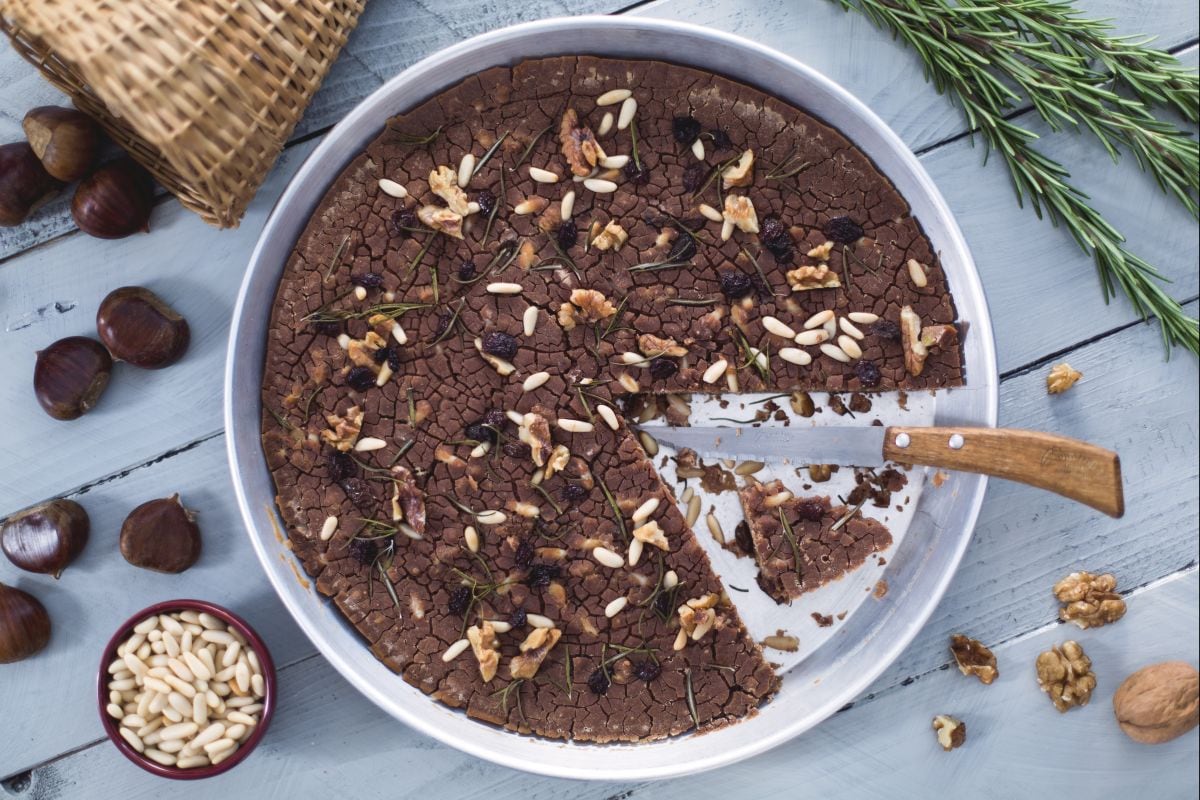Chestnut and chocolate tart
- Average
- 2 h 35 min
- Kcal 572

The castagnaccio, baldino or pattona chestnut cake is a traditional dessert made with chestnut flour and raisins, pine nuts, walnuts, and rosemary. It is difficult to determine its exact origin. We have made a Tuscan-style chestnut cake, but this recipe is also used in Veneto, Piedmont, and Lombardy, all regions in which the chestnut is a popularly used ingredient. All of its variations share the simple ingredients of chestnut cake itself: water, chestnut flour, and rosemary. Chestnuts were already so well-known and appreciated in the sixteenth century that an Augustinian priest discussed it in one of his writings. It seems that the creator of the chestnut cake was the Tuscan Pilade da Lucca, who is mentioned in the "Commentary of the most notable and monstrous things of Italy and other places" written by Ortensio Orlando, published in Venice in 1553. However, it was in the 19th century that the Tuscans exported the chestnut cake to the rest of Italy, and it was in this period that it was enhanced with raisins, pine nuts, and rosemary. Each family has its own chestnut cake recipe, but here we will share our version with you!

To prepare the Tuscan chestnut cake, first wash the raisins in fresh water and soak them in a bowl of cold water for 10 minutes to rehydrate them 1. Coarsely chop the walnut kernels with a knife 2, then peel off the fresh rosemary needles 3.

Sift the chestnut flour into a large bowl 4 and add the 2 3/4 cups (650,g) of water a little at a time, stirring with a hand whisk 5; when the mixture is smooth and homogeneous, add the chopped walnuts and whole pine nuts 6, making sure to set a small amount aside that will later be used on top of the cake before baking.

After 10 minutes, squeeze and dry the raisins, then add them to the mixture 7, adding a small amount at a time; mix well 8 and add salt 9.

Oil a 12 inch (32 cm) low round cake tin 10 and pour the mixture, leveling it with a spatula 11. Sprinkle the surface of the cake with the pine nuts, walnuts and raisins set aside, distributing them evenly 12.

Lastly, add the rosemary needles 13, a drizzle of oil, 14 and cook in a static oven preheated to 380° F (195° C) for approximately 35 minutes. When a crust forms cracks on the surface and the nuts have a nice golden color, take the cake out. When cool, serve and enjoy the Tuscan chestnut cake 15.